Shotguns are great multi-purpose firearms.
But have you ever wondered why you can easily fill your spring turkey tags, yet have trouble busting clay pigeons in the off-season? Or maybe it’s the other way around?
It could be your choke.
The shotgun may be the most versatile weapon in the world of firearms. You can use it for home defense, or hunting everything from big game to small upland birds.
The typical scattergun really is a Jack of all trades. But as the saying goes, it’s also a master of none. While it is a capable choice for pretty much any shooting job, a shotgun does a mostly mediocre job at all of them
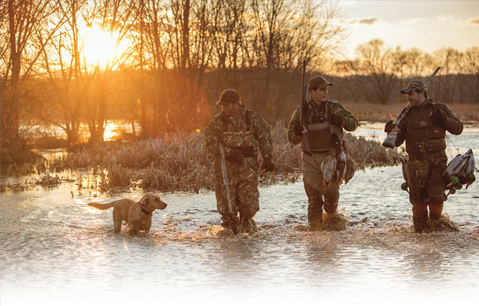
However, you can turn one standard shotgun into several highly specialized guns by using a variety of choke tubes.
Want to find out how? Read on, dear friend.
Table of Contents
What is a Choke?
When you hear the word “choke,” it may conjure memories of that fifty bucks you lost when Khabib submitted Conor McGregor in round four of UFC 229.
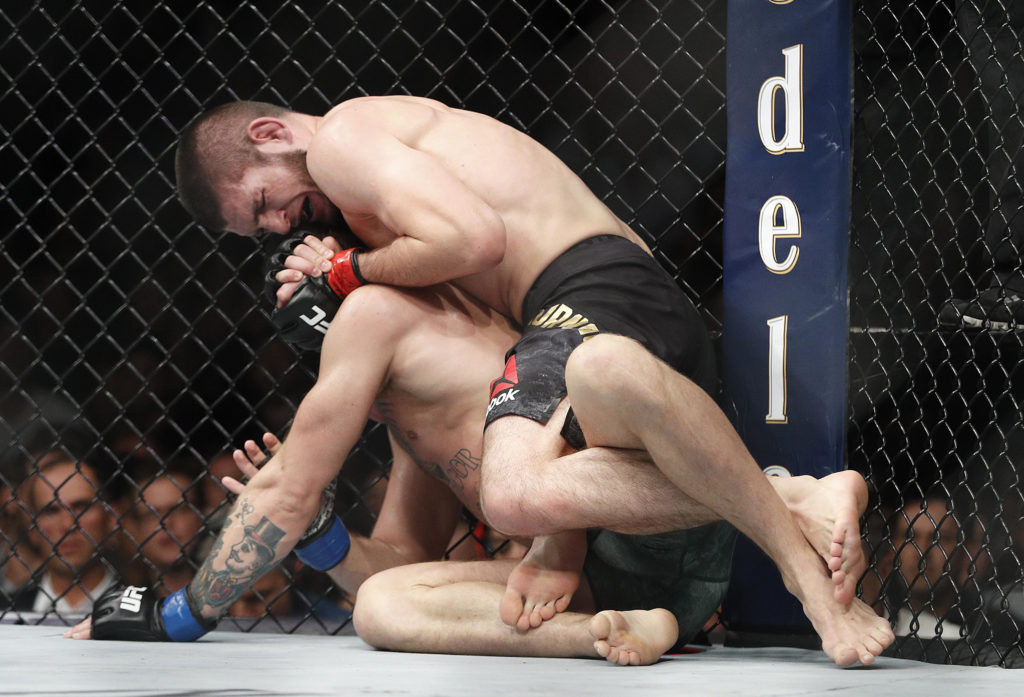
We aren’t referencing the rear naked choke here. Instead, we’re talking about shotgun chokes. Although the concept is roughly the same.
Just like Khabib used his arms to constrict McGregor’s airway, a shotgun choke constricts your shot pattern.
When you fire a shot from a shotgun, the pellets packed inside the shotshell get propelled down the barrel and come flying out the muzzle. Once these pellets leave the muzzle, they begin to spread. This spread increases like an ever expanding cone as the pellets travel downrange toward your target.
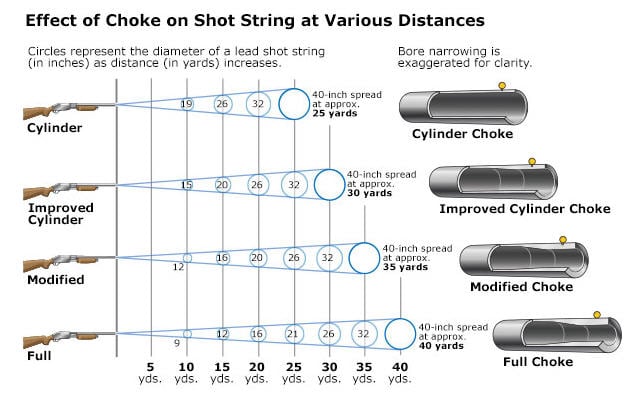
Certain shotgun chokes constrict the barrel and tighten the spread of the shot, just like Khabib constricted McGregor’s windpipe, tightening the airflow to his lungs, and making Mcgregor tap like a fluttering butterfly.
Not an MMA fan? (I’m silently judging you.) Try this analogy on for size.
Remember spraying your little brother down with the garden hose when you were a kid? Think of a choke like the nozzle on a garden hose.
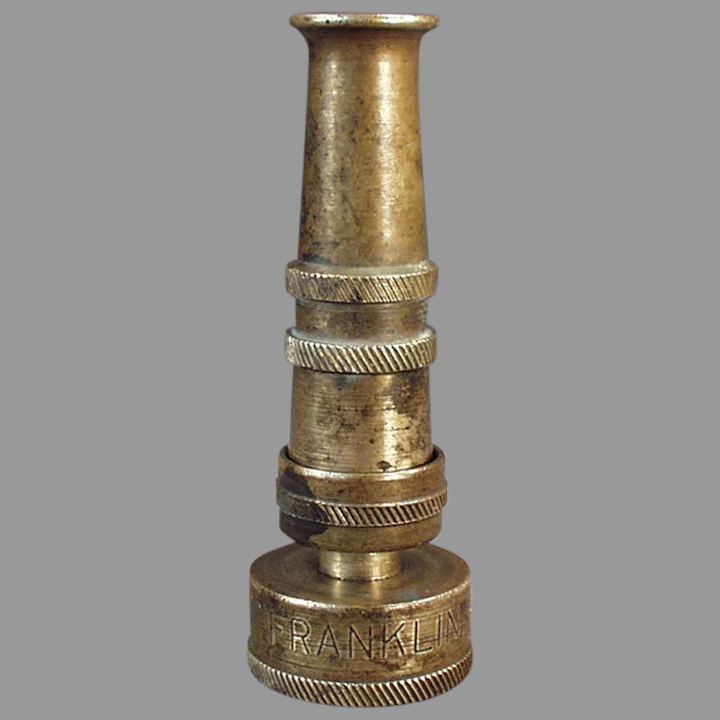
When the nozzle is tightened, the water comes out in a narrow stream. When the nozzle is opened, it creates a wider spray of water. Different chokes work just like the nozzle on the garden hose.
Need pinpoint precision? You tighten that nozzle down and hit your brother right in the face. Need precision in a shotgun (not to shoot your brother. That’s a felony.) you choose an extra full choke tube.
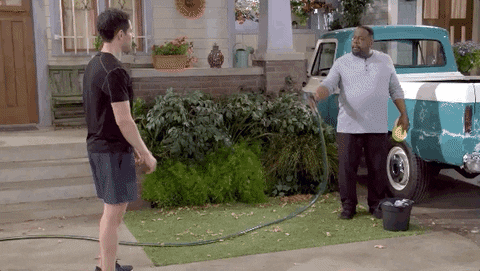
Need to hit a fast-moving target as your brother runs hollering for Mom? Open that nozzle up for a wider spray. In the world of shotguns, you want a cylinder choke to improve your chances of hitting a moving target. (Again… DON’T SHOOT YOUR BROTHER!)
Fixed Vs. Screw-In Chokes
Some shotguns have a fixed choke integrated right into the barrel. Back in the days when Grandpa was walking to deer camp (barefoot in the snow uphill both ways), this was the only way to buy a shotgun. You had to make sure you picked a scattergun with a choke suitable for your favorite type of shooting.
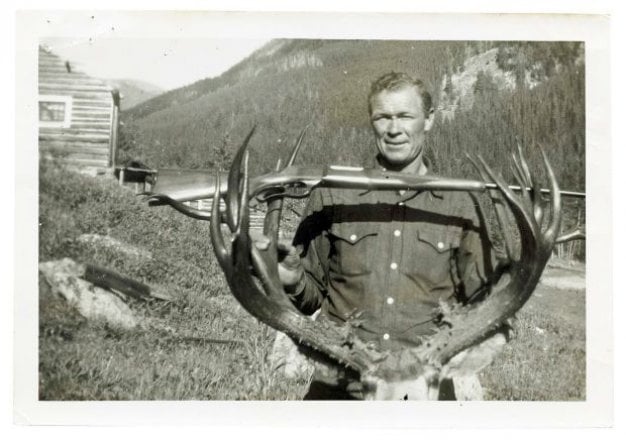
If you wanted to hunt Spring gobblers with your duck hunting gun (featuring a fixed improved cylinder choke), you’d better call that strutter in pretty close in order to pull off a shot. The only other option was to swap out the entire barrel.
Then in 1969, the world of shotgun chokes opened up to new possibilities. That year, Winchester introduced its Model 1200 and Model 1400 shotguns. These shotguns featured the very first interchangeable choke-tube system, hailed as the WinChoke.
Unfortunately, it would take several more decades for the interchangeable choke tube idea to gain momentum.
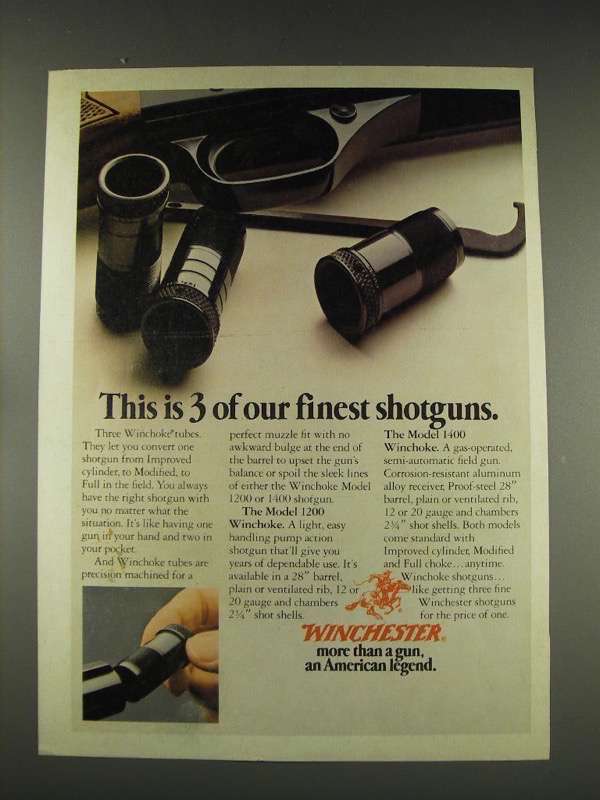
In 1978, Mossberg introduced its Accu-Choke tube system on its wildly popular Model 500. Honestly, when you consider the 70s gave birth to Disco, pet rocks, and the Ford Pinto, the Accu-Choke may be the best thing to come out of that decade.
We certainly have Mossberg to thank for other major manufacturers jumping on the choke tube bandwagon (a vehicle way cooler than the Pinto).
By the way, you can still purchase Mossberg’s iconic Model 500 shotgun, and it still comes with a set of Accu-Choke tubes.
Prices accurate at time of writing
Prices accurate at time of writing
-
25% off all OAKLEY products - OAKLEY25
Copied! Visit Merchant
Extended Vs. Flush choke Tubes
Choke tubes come in two basic varieties, extended and flush. It doesn’t take a rocket scientist to figure out how these two choke tubes differ.
You guessed it. Extended choke tubes extend past the end of the barrel. Flush choke tubes sit flush with the muzzle when fully inserted.
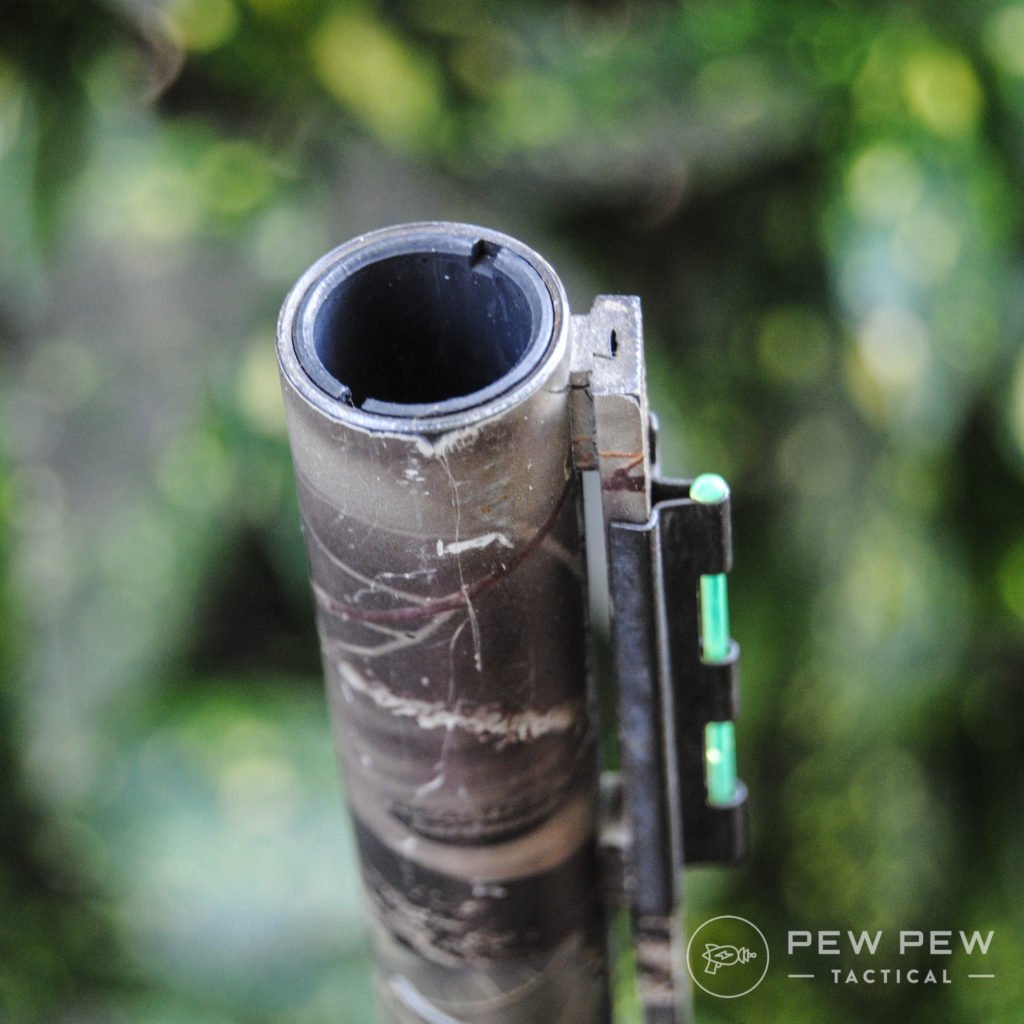
Is one better than the other? That’s largely a matter of opinion.
Extended choke tubes are supposed to extend choke angle and length and may have special porting which may improve performance. However, many shotgunners claim these are nothing more than elaborate marketing gimmicks.
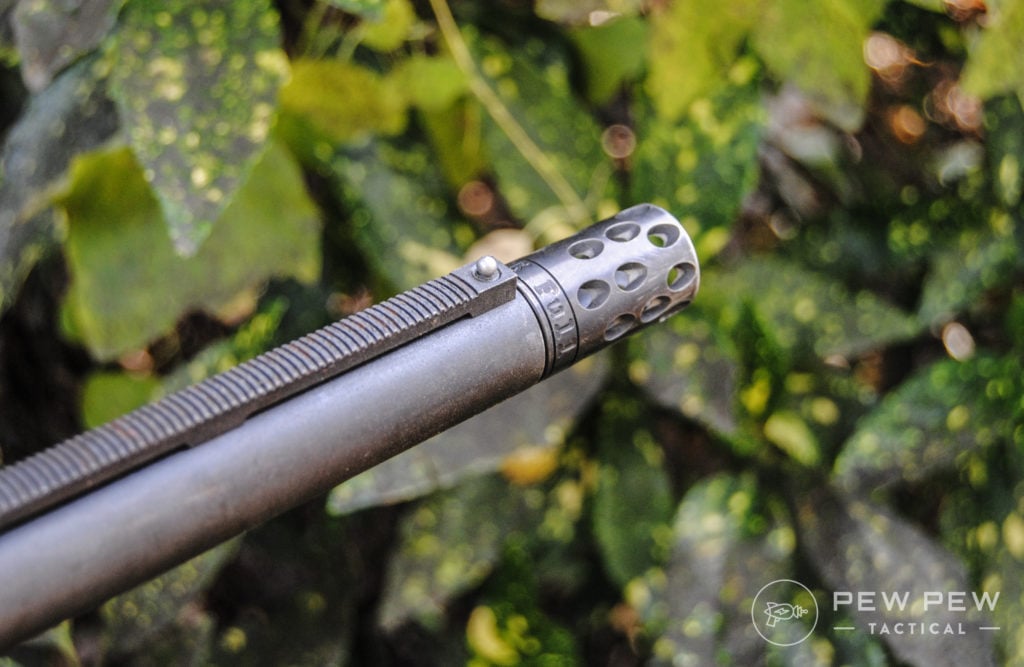
However, there are a few important reasons to opt for an extended choke tube.
- They are easier to screw in.
- There is usually some label on the extended tube for easy identification.
- They protect the end of your muzzle from dings and dents.
- They look really cool.
Choosing the Proper Choke Tube
Despite the popularity of the interchangeable choke tubes, chokes are not always interchangeable. Most are specific to gun make and model. You can’t install a Mossberg choke on a Remington shotgun.
Shotgun manufacturers aren’t stupid. They want you to buy their products, so they tend to make their shotguns only compatible with their own chokes.
However, there are some exceptions. Some chokes are interchangeable between some shotguns. When in doubt, check with the manufacturer.
Types of Choke Tubes
The choke tube is placed in the bore of the shotgun barrel. (For you newbies, that’s the muzzle end of the gun).
Like we said, the choke tube constricts the shot charge as it exits the muzzle, creating a denser shot pattern at a longer range than you would get with no choke at all.
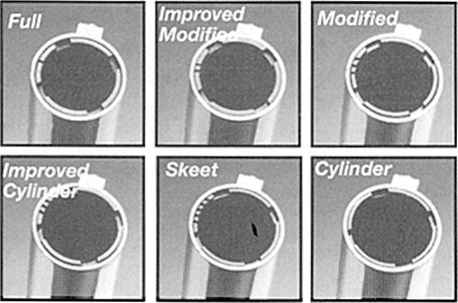
The choke tube does more than tighten the density of your shot pattern. It also influences (at least to some extent) your effective range. Generally speaking, the tighter the shot pattern, the longer your effective range.
Your choke tube is simply a tool. While you CAN drive a nail with a screwdriver, it definitely isn’t the best tool for the job. Obviously, a screwdriver is a much better tool for driving screws than nails. If you want to drive nails in a hurry, nothing beats a hammer. To do the job in the best and most efficient way possible, you just need to match the proper tool for the job.

The same is true when it comes to choke tubes. If you want to get the best performance out of your shotgun, you need to match your choke tube to your shooting application (and your ammo, but that is a topic for another time).
Not sure what kind of choke tube you need? Here are the most common types of shotgun choke tubes as well as what they do best.
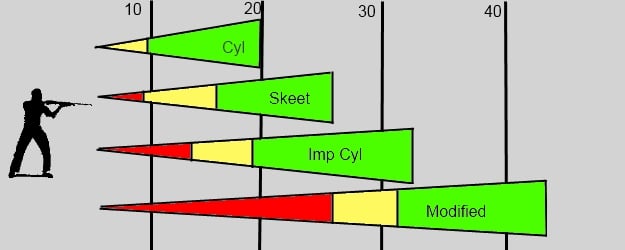
Open Choke Cylinder (.000 inch constriction)
An open choke cylinder is simply the same constriction as the full length of the barrel. Think of it as a wide open garden hose with no nozzle at all. Not really a “choke,” the cylinder bore doesn’t tighten the shot pattern at all.

A cylinder bore spreads shot faster than any other choke design. It also has the shortest accurate range.
At 40 yards, the standard cylinder bore on a 12 gauge shotgun will land only about 40 percent of your pellets in a 30-inch circle. However, you can expect 80 percent of the pellets to land in that same 30-inch circle at 20 yards.
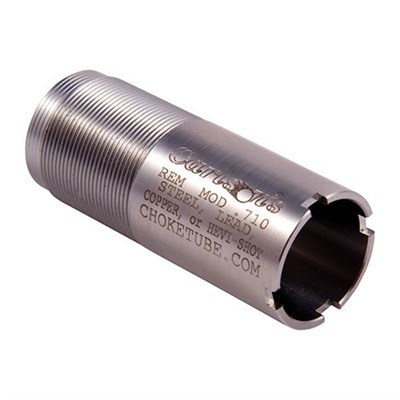
A true short distance choke, the open cylinder lets the shot spread fast and wide. While that might sound like a bad thing, it has its place. That fast shot spread increases your chances of hitting close targets, especially ones that pop up quickly and don’t give you time to aim perfectly.
For example, you’re walking through tall uncut corn and nearly step on a big pheasant before flushing it. In those tall corn stalks, you’ll have only seconds to pull a bead on that bird before he disappears. With limited time and distance to make the shot, an open choke cylinder just became your new best friend.

An open choke cylinder is also a popular choice for home defense, where your target should be no further than the length of a hallway. At that close distance, you won’t see much shot spread. However, even some spread is better than none, otherwise your shotgun is nothing more than a short-range rifle that kicks like a mule and is hard to reload.
Improved Cylinder (.010 inch constriction)
You can identify an improved cylinder choke tube by counting the number of notches on its rim. If you count four notches, you’re looking at an improved cylinder choke.

An improved cylinder offers just a little more constriction than an open choke cylinder. Expect about half of your pellets to fall within that 30-inch circle at 40 yards. The ideal range for an improved cylinder is 15 to 30 yards.
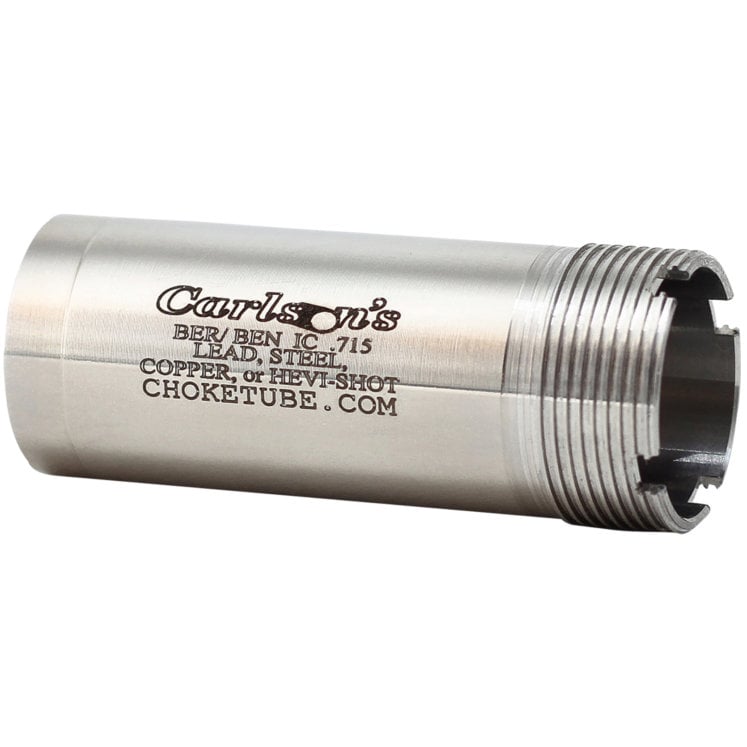
A ten percent improvement isn’t much, but it is enough to make the improved cylinder THE choice for hunting close-quarters upland birds. It is also a good choice for shooting ducks as they try to land on top of your decoys.
Modified (.020 inch constriction)
Modified chokes tubes can usually be identified by the three notches in their rim. This is the standard identifying symbol for a modified choke tube, although some manufacturers use different identifying symbols.
A modified choke tightens the shot constriction just a little bit more than an improved cylinder. Shoot a 30-inch circle that is 40 yards away, and a modified choke will put about 60 percent of your shot inside the circle.

A great middle-of-the-road option, a modified choke gives medium accuracy at medium distances (about 20 to 35 yards).
Basically, a modified choke is like the Hannah Montana of shotgun chokes. It’s just trying to live the best of both worlds.
Want to hunt general waterfowl, rabbits, other small game, distant-flushing pheasants, or doves? Get yourself a modified choke.
Full (.035 inch constriction)
Usually identified by a single serration in the rim, the full choke delivers tight constriction and dense shot patterns. A full choke puts 70 percent of your shot inside that 30-inch circle at 40 yards. If you want to do some longer range shooting (think 35 to 50 yards), a full choke is your best bet.

A full choke is a good option for buckshot. It’s also a common choice for turkey hunters and makes plenty of appearances on the trap range.
Extra Full (.045 inch constriction)
If you thought full was as full as it gets, you’re wrong. In the world of shotgun choke tubes, things can be extra full.
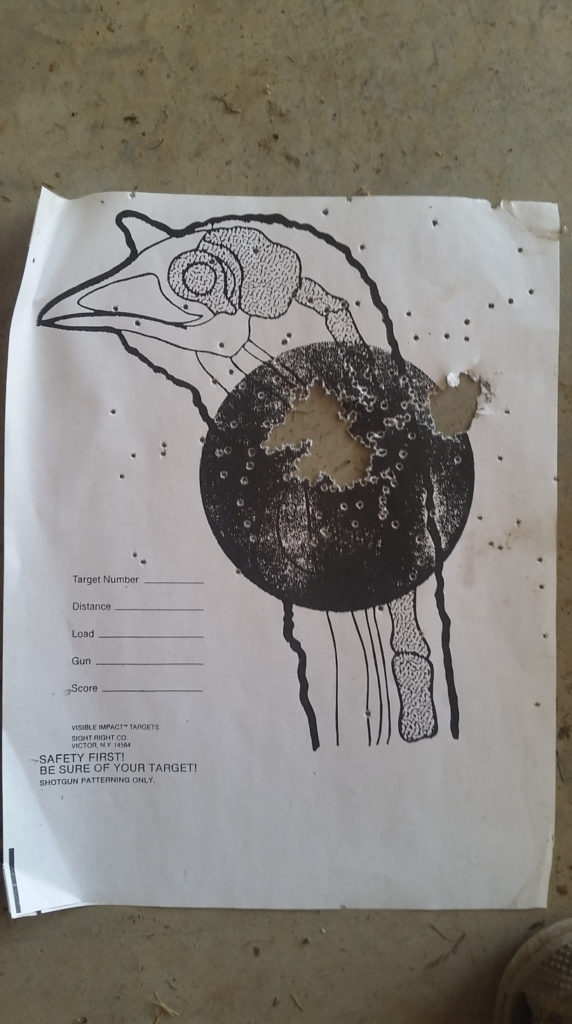
Sometimes called a “gobbler getter,” an extra full choke delivers extra tight constriction for the best shot pattern density. This one is a favorite of turkey hunters who need to hit a very small target (i.e. a turkey head).
Skeet Shooting and Choke Tubes
Shooting clay targets is just plain fun, whether you’re doing it for entertainment, to keep your hunting skills sharp, or you just enjoy the thrill of competition. However, you won’t be dusting clay pigeons with any ole choke tube.
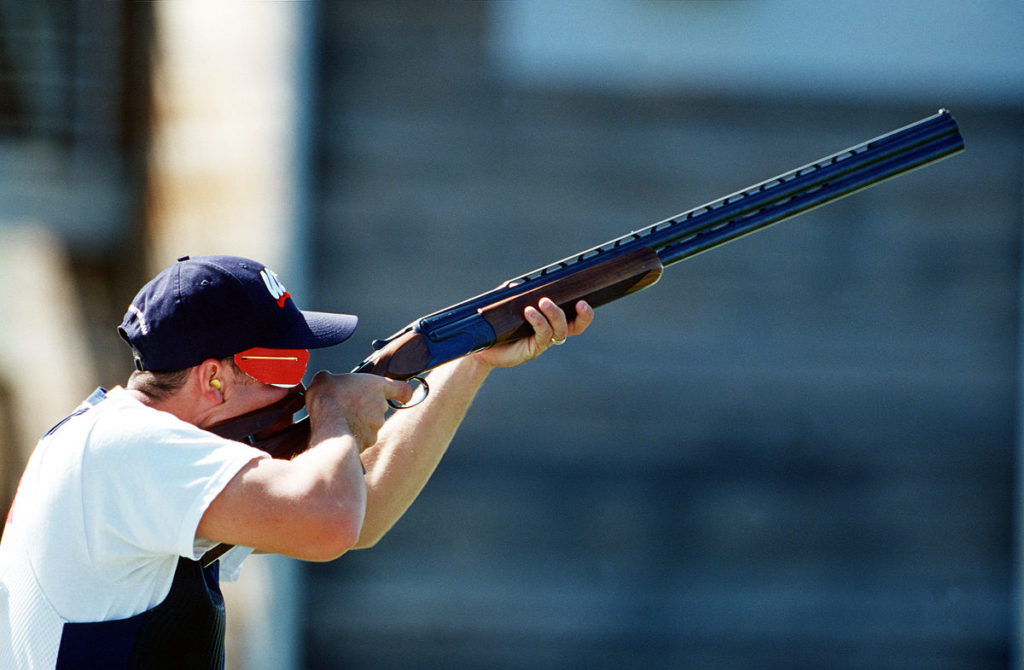
The skeet choke is a popular choice for skeet shooters. (Duh.)
Only a tiny bit tighter than an open bore cylinder (.005 inch constriction), a skeet choke allows your pellet spread to open up wide and fast, yet still manages to give you a slight range advantage.
Don’t let the name fool you. You are totally allowed to use a skeet choke for other things, especially birds on the wing. A skeet choke is actually an awesome choice for early fall dove hunting.
Other Specialty Choke Tubes
Choke tubes aren’t particularly smart. They have no idea what type of shot you’re getting ready to run through them. They just sit there and take whatever you dish out.

While you might choose a modified choke before you hit the duck blind, your choke might not be up for those steel shot loads.
Traditional choke tubes are built to handle traditional lead shot. However, most states require waterfowl hunters to use non-lead shot. The problem is, steel shot is a lot harder on shotguns (and choke tubes) than the much softer lead shot. It also doesn’t pattern the same.
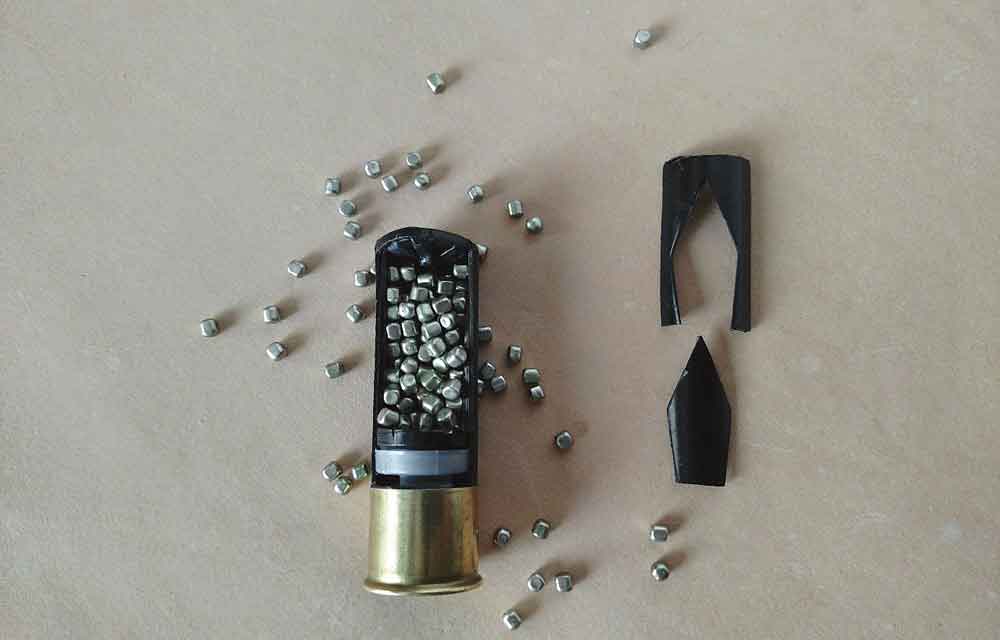
If you plan to shoot steel shot, you’ll want a specialty waterfowl choke tube (like Carlson’s Waterfowl Choke Tube Set). These chokes are specifically designed to take the beating steel shot dishes out. Plus, it will hold a tighter pattern, which should help you bag more ducks.
Prices accurate at time of writing
Prices accurate at time of writing
-
25% off all OAKLEY products - OAKLEY25
Copied! Visit Merchant
There are other specialty tubes made specifically for use with Hevi-Shot, tungsten, and other super-dense shot loads. If you like to hunt ducks and geese with Hevi-Shot (who doesn’t?), you’re going to want a Hevi-Shot Waterfowl Choke Tube.
Prices accurate at time of writing
Prices accurate at time of writing
-
25% off all OAKLEY products - OAKLEY25
Copied! Visit Merchant
Choke Tubes for Predators
Specialty chokes aren’t just for waterfowl. Several choke tube companies are capitalizing on the growing number of predator hunters.
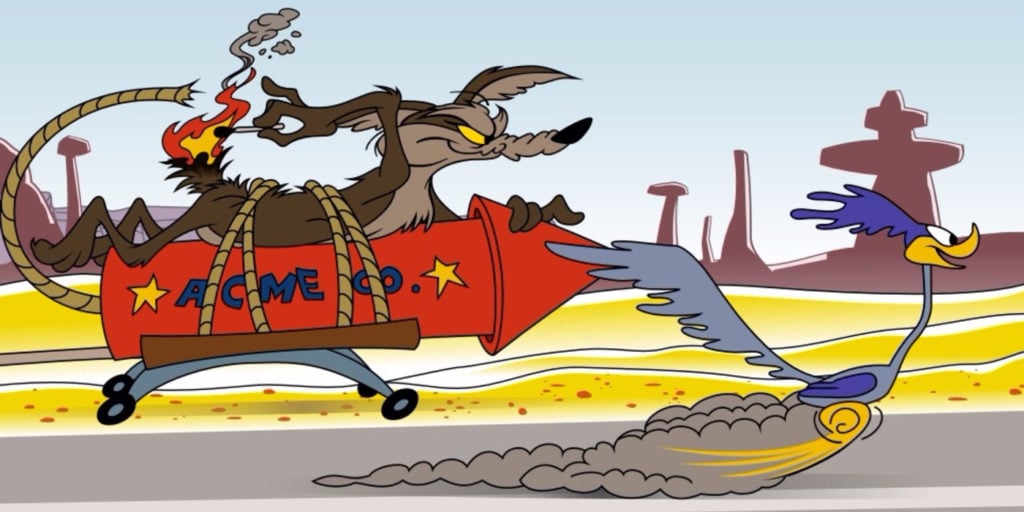
Hunting coyotes with a shotgun is no easy feat. Specialty predator chokes like Carlson’s Coyote Choke Tube are designed to keep large T shot and buckshot patterns tight for extended ranges. Some companies even claim their chokes are lethal out to 70 yards, which is a serious accomplishment with a shotgun.
Prices accurate at time of writing
Prices accurate at time of writing
-
25% off all OAKLEY products - OAKLEY25
Copied! Visit Merchant
Shooting Slugs with a Choke Tube
Okay. We’ve talked a lot about how a choke affects shot patterns, but what if we want to shoot slugs?
I’m glad you asked.
Since a slug is basically a single lead projectile, you don’t have to worry about how your choke will affect your shot spread. However, you still need to think about your choke’s constriction on your slug.
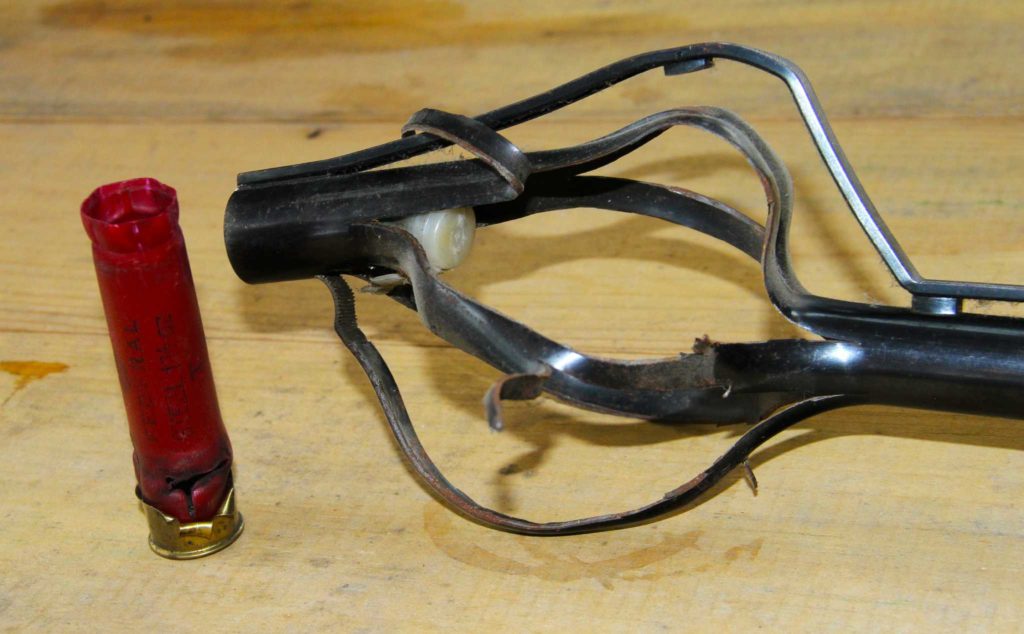
First, you should never shoot slugs without a choke in place. (Unless you want to destroy the threading in your barrel. If so, carry on.)
Theoretically, if you shoot a slug through a choke that is very constricted (like a full or extra full), you could hurt yourself. Or worse, you could damage your shotgun.
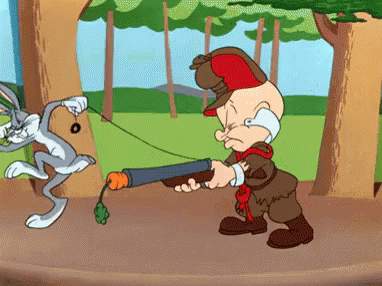
The problem is If the diameter of your slug is larger than the diameter of your choke. If you try to launch a wide object through a tiny opening, you’re going to have a hard time. (Don’t believe me? Ask your mom about childbirth.)
If you plan to shoot slugs, use a cylinder or improved cylinder. These should be plenty wide for a slug to safely pass through.
Specialty Slug Chokes
Another option is to use a rifled choke. A perfect option for hunting whitetails in rifle-restricted areas, a rifled choke increases slug accuracy in smoothbore shotguns. The choke features rifling through the length of the choke tube and can be used with Foster-style slugs or sabots.
Prices accurate at time of writing
Prices accurate at time of writing
-
25% off all OAKLEY products - OAKLEY25
Copied! Visit Merchant
Patterning Your Shotgun
Shot patterns are like fingerprints. No two patterns are exactly alike.
Not all shotguns pattern the same, even with the same load and choke combination. The only way to know how well your shotgun takes to the combination, is to pattern-test it.
How do you do that?
Draw some 30-inch circles on paper and head to the range. Shoot the paper and count the holes. (This is the over-simplified, CliffsNotes version of how to pattern a shotgun.)
You want a shot pattern that isn’t super dense in the center, but you also don’t want to see weird shot patchiness anywhere on the target. If you don’t like what you see and you don’t trust it for whatever game you’re after, switch your load or your choke. Then draw some more circles and count some more holes until you find something that satisfies you.
Choke Maintenance
Choke tubes aren’t maintenance free. Just like lead residue builds up in your barrel, it also builds up in your choke tube. Powder and plastic residue (from wads) can also dirty both the interior and exterior of the choke.
After a day of shooting, go ahead and remove your choke tube and give it a good cleaning. You can use the same solvent you use on your shotgun to clean all the surfaces of the choke tube. Don’t forget to clean the threading.
You should also apply some choke tube lube on the threads. This will make future cleaning easier, reduce wear and tear, and prevent the choke from seizing inside the barrel.
Prices accurate at time of writing
Prices accurate at time of writing
-
25% off all OAKLEY products - OAKLEY25
Copied! Visit Merchant
Final Thoughts
Most modern shotguns come with a threaded barrel for screw-in chokes. Perhaps one of the greatest modern-day inventions (forget vaccines and smartphones), interchangeable choke tubes take one of the most versatile weapons on the planet to a whole new mind-blowing level of versatility.
Now, with a simple turn of the wrist, you can swap out choke tubes and have immediate access to a highly specialized weapon perfectly suitable for whatever shooting discipline is up next on your agenda.
Do you have a favorite choke tube? Share your experiences in the comments below. In the market for a new shotgun? Check out our articles on the Best Beginner Shotguns for Bird Hunting and Remington 870 Vs. Mossberg 500: [Battle of the Pumps]

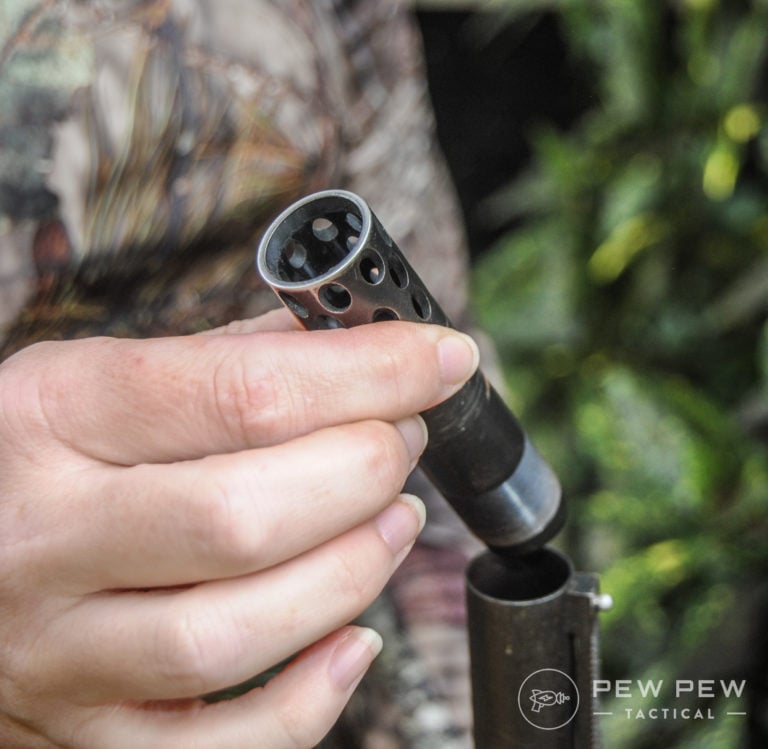
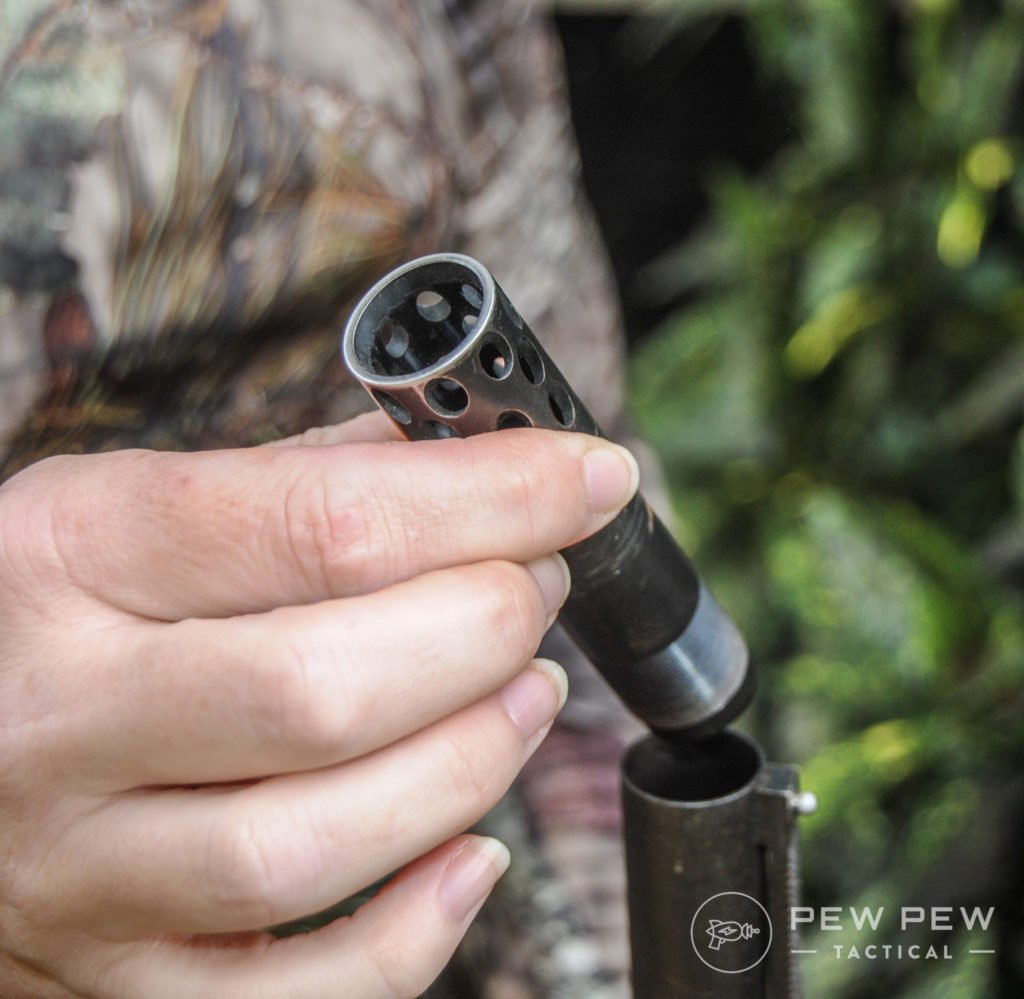













11 Leave a Reply
I just bought a Mossberg Silver Reserve O/U. They recommend an CYC or Skeet for any shot larger than #2 steel. That would be B, BB, BBB, T and F steel. What is your thoughts on this? This is with their chokes, would Carlsons chokes would free up another option such as a Modified Choke?
Great article, full of good information and written better than anything I have read lately. Thanks !!!!
Thanks for reading!
Thank you so much for sharing all this information! When i bought my Remington 870 Tactical and learned that i need chokes for different ammo. My head was spinning And finding Remington 12 gauge chokes are hard to com buy a lot have been taken off market. Again thank you!
I have a Maverick 88 which has the Mossberg 500 general purpose 28" barrel. I added an Improved-Cylinder and Full Choke to the standard Modified that comes with an 88. I next looked for a Cylinder choke, and find no record anywhere that anyone, Mossberg and Carlson included, has ever offered one in that size. Surely with the millions of Mossberg 500s in existance someone at least once has wanted to shoot slugs.
got a sxp turkey gun, 20 ga. wanna shoot slugs, too. winchester guy says call briley. briley guy says use skeet tube, .005 for slugs, cause it's rifled. why was this a big secret? share the news.
"Theoretically, if you shoot a slug through a choke that is very constricted (like a full or extra full), you could hurt yourself. Or worse, you could damage your shotgun."
I think Ron Weasley just shook his head and said something about priorities. LOL
The open cylinder choke pictured is a modified .710 choke and not a .730 cylinder.
Totally agree about how close you get hunting pheasants. As a kid in ND, I was sent ahead to flush them out. Literally stepped on at least two birds, which knocked me on my back at the time. Nothing like flushing a bird with some tail feathers still stuck under your boot.
Thanks for the article! Two questions...
1. You said that shooting slugs without a choke tube would damage your shotgun's choke threading. Will the same thing happen if you shoot birdshot without a choke tube in?
2. If you're shooting an over/under, is it better to use the same chokes in both barrels, or use different ones? (Say a tighter choke in the second barrel)
Hello!
1. Generally, it is better to have the threads protected no matter what, but there is less chance of hurting them when shooting birdshot. I would still strongly recommend having a choke of some kind to protect the threads.
2. It depends on what you're using the shotgun for. In trap and skeet it is very common to switch between the same chokes and different chokes. If you're shooting clays one after another, two of the same chokes means you have the same effective range. If you're shooting doubles then having a choke for closer range and a choke for further range helps.